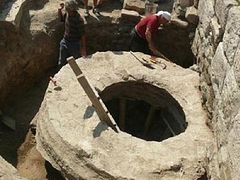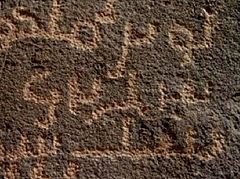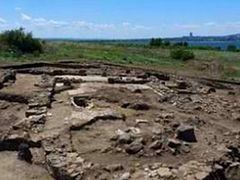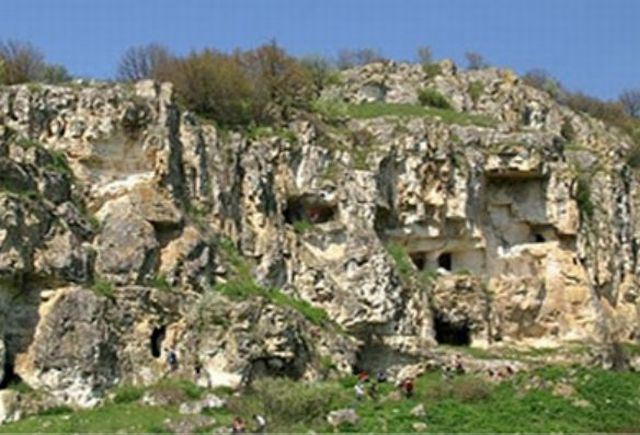 The Early Christian rock monastery near Bulgaria's Balik was inhabited by monks from the 5th-6th century AD until the 14th century AD.
The Early Christian rock monastery near Bulgaria's Balik was inhabited by monks from the 5th-6th century AD until the 14th century AD. An Early Christian rock monastery in Northeast Bulgaria, which according to some historians andarchaeologists is the oldest of its kind in Europe, has been revived for the first time since the conquest of the medieval Bulgarian Empire by the Ottoman Turks at the end of the 14th century AD.
The place of the ancient rock monastery near the Bulgarian town of Balik, Krushari Municipality,Dobrich District, is still known today by its derogatory and offensive Turkish name “Gaiour (Gavur) Evleri” meaning “Homes of the Infidels”, as the original name of the holy place remains unknown.
The first Christian service in the rock monastery near Balik since the 14th century has been served byFather Veliko Velikov from the Holy Trinity Church in Dobrich at the initiative of the Dobrich Regional Museum of History.
With his service and prayers he consecrated an icon of St. Ivan Rilski (St. John of Rila) (876-946 AD),Bulgaria’s patron saint, which was placed in a special niche in the rock monastery to replace an iconthat has probably been gone for centuries. The new icon is the work of Georgi Georgiev, an icon painter (iconographer) from the Black Sea city of Varna.
According to Bulgarian archaeologist Prof. Georgi Atanasov from the Silistra Regional Museum of History, the rock monastery near Balik is dated to the Late Antiquity and Early Byzantine period, namely the 5th-6th century AD, not so long after Christianity became the official religion of the Roman Empire in the 4th century AD. At that time, the territory of today’s Northeast Bulgaria was part of the Roman province Scythia Minor.
The rock monastery near the town of Balik is located along the canyon of the Suhata Reka (Dry River)in Northeast Bulgaria, in natural caves that were also enlarged by the Early Christian and medieval monks who inhabited them; it consists of a rock church, service rooms, and a total of 10 rock cells.
The church and the monk cell caves are located on three levels. The rock church itself was enlarged by the monks by digging deeper into the rock. It has the shape of a square with sides 3.1 meters x 3.1 meters, and is 1.9 meters high.
Several hundred meters to the north of the rock monastery there are two more hermits’ cells and a tomb church known to the locals with the Turkish name Sandiklari Maara, i.e. the Chest Cave, which was used as the burial place of the monks.
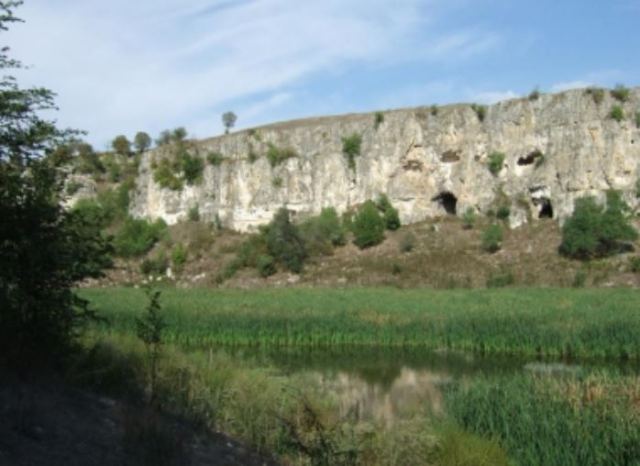 The rock monastery near Balik in Northeast Bulgaria is located in the picturesque canyon of the Dry River.
The rock monastery near Balik in Northeast Bulgaria is located in the picturesque canyon of the Dry River.
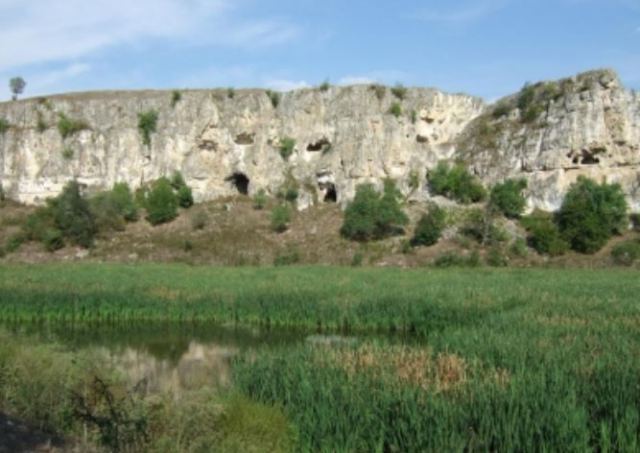 The rock monastery near Balik in Northeast Bulgaria is located in the picturesque canyon of the Dry River.
The rock monastery near Balik in Northeast Bulgaria is located in the picturesque canyon of the Dry River. Bulgarian archaeologists have found artifacts such as ceramic vessels, and runic and Old Bulgarian (Cyrillic) inscriptions left by the monks indicating that the Early Christian rock monastery near Balik existed from the time of its founding in the Late Antiquity / Late Roman and Early Byzantine period until the demise of the Second Bulgarian Empire (1185-1396 AD).
The monks were either killed or abandoned the place during Bulgaria’s conquest by the Ottoman Turks who called it with the offensive name “Gaiour (Gavur) Evleri” meaning “Homes of the Infidels”.
The initiative of the Dobrich Regional Museum of History aims to restore Christianity to the once unique Early Christian and medieval rock monastery near Balik, and to promote the place as a culturalsite.
Background Infonotes:
The Early Christian rock monastery near the town of Balik, Krushari Municipality, Dobrich District in Northeast Bulgaria is the oldest of its kind in Europe, according to some historians andarchaeologists. According to Bulgarian archaeologist Prof. Georgi Atanasov from the Silistra Regional Museum of History, the rock monastery near Balik is dated to the Late Antiquity and Early Byzantineperiod, namely the 5th-6th century AD, not so long after Christianity became the official religion of the Roman Empire in the 4th century AD. At that time, the territory of today’s Northeast Bulgaria was part of the Roman province Scythia Minor.
The rock monastery near the town of Balik is located along the canyon of the Suhata Reka (Dry River)in Northeast Bulgaria, in natural caves that were also enlarged by the Early Christian and medieval monks who inhabited them; it consists of a rock church, service rooms, and a total of 10 rock cells. Thechurch and the monk cell caves are located on three levels. The rock church itself was enlarged by themonks by digging deeper into the rock. It has the shape of a square with sides 3.1 meters x 3.1 meters, and is 1.9 meters high. Several hundred meters to the north of the rock monastery there are two morehermits’ cells and a tomb church known to the locals with the Turkish name Sandiklari Maara, i.e. the Chest Cave, which was used as the burial place of the monks.
Bulgarian archaeologists have found at the Monastery intriguing artifacts such as ceramic vessels, and runic and Old Bulgarian (Cyrillic) inscriptions left by the monks indicating that the Early Christian rock monastery near Balik existed from the time of its founding in the Late Antiquity / Late Roman and Early Byzantine period until the demise of the Second Bulgarian Empire (1185-1396 AD).The monks were either killed or abandoned the place during Bulgaria’s conquest by the Ottoman Turks who called it with the derogatory and offensive name “Gaiour (Gavur) Evleri” meaning “Homes of the Infidels”, which is how the place is still known today. In July 2015, at the initiative of the Dobrich Regional Museum of History, the Monastery saw its first religious service and consecration since the 14th century.

